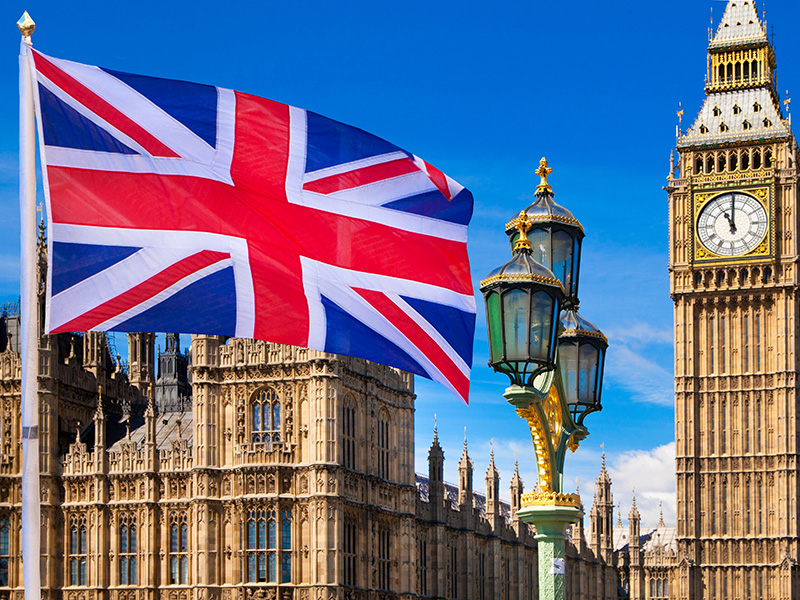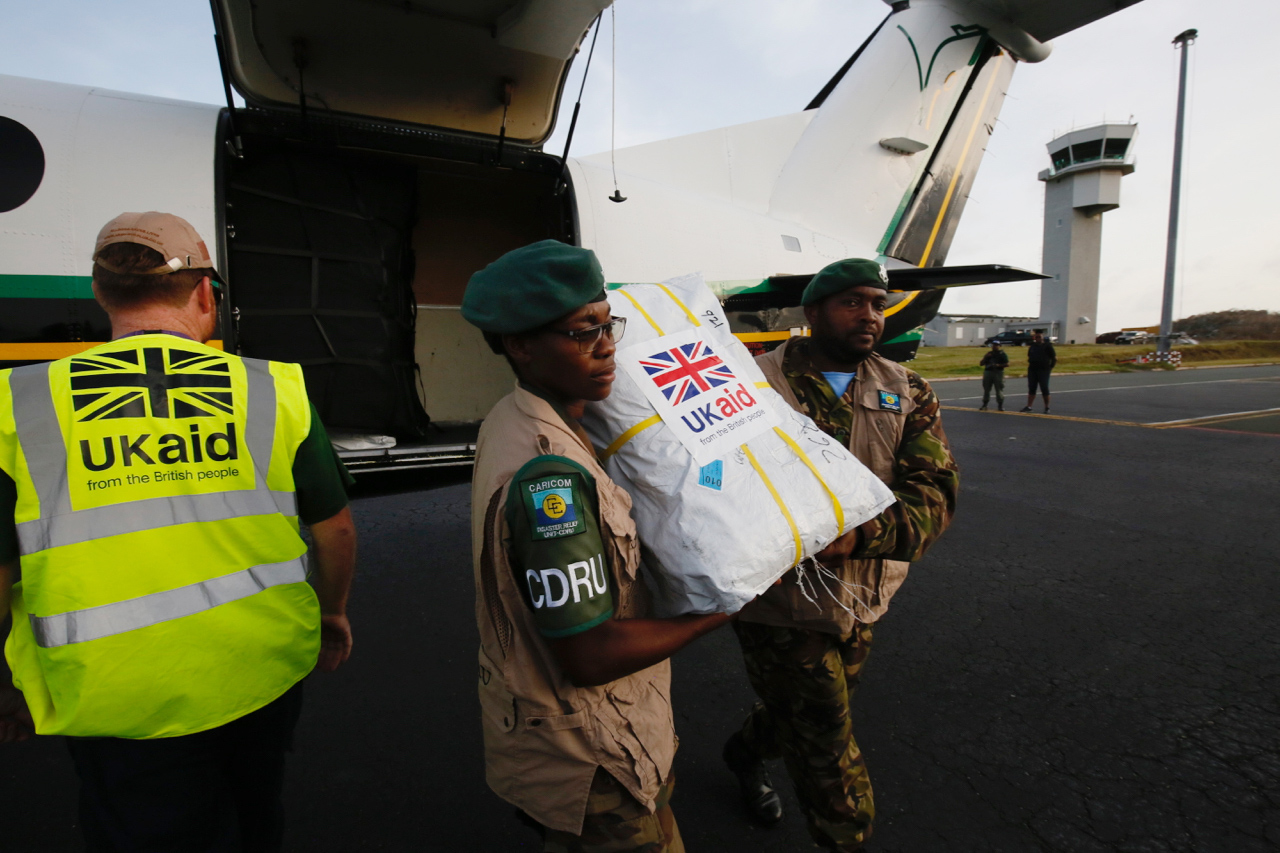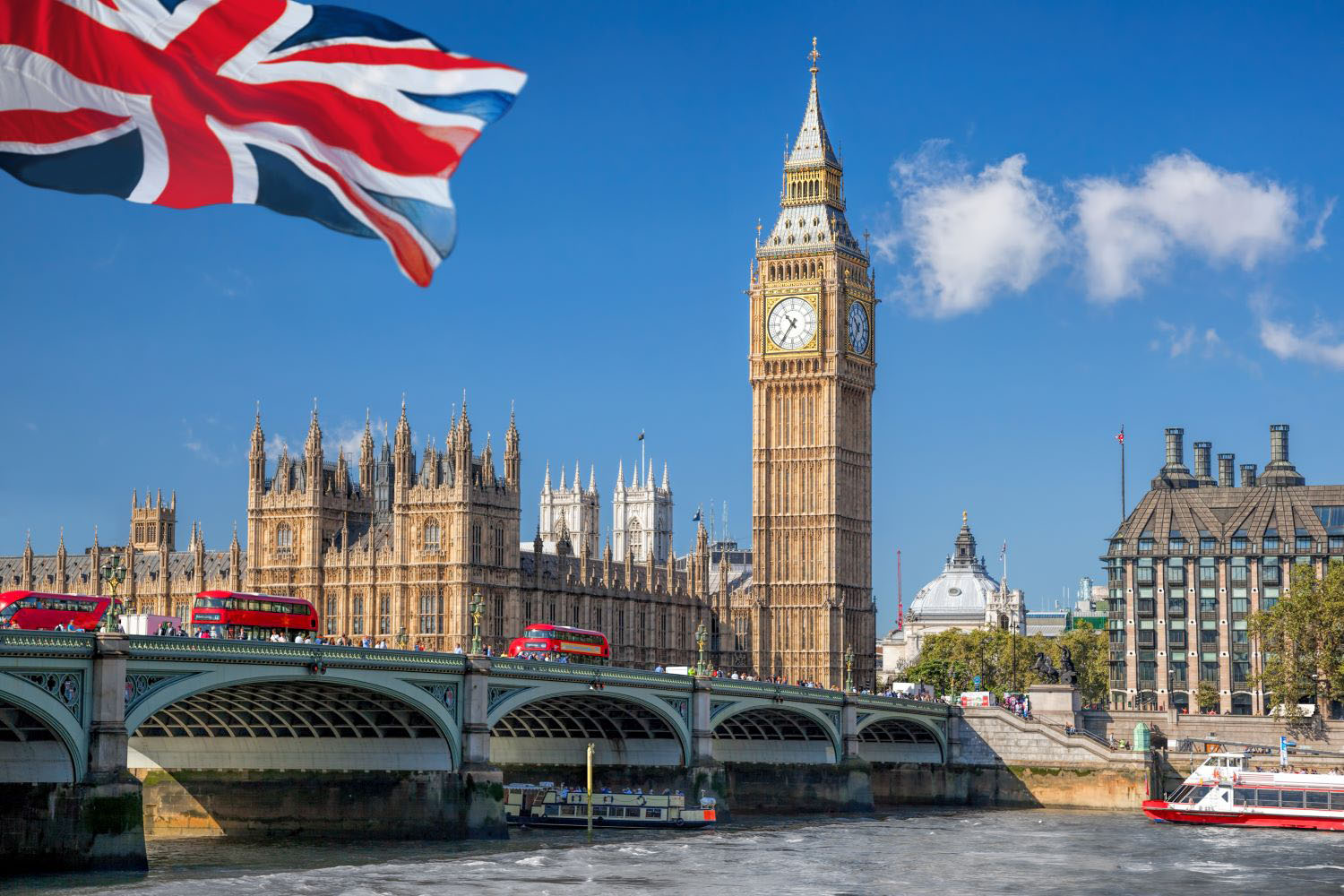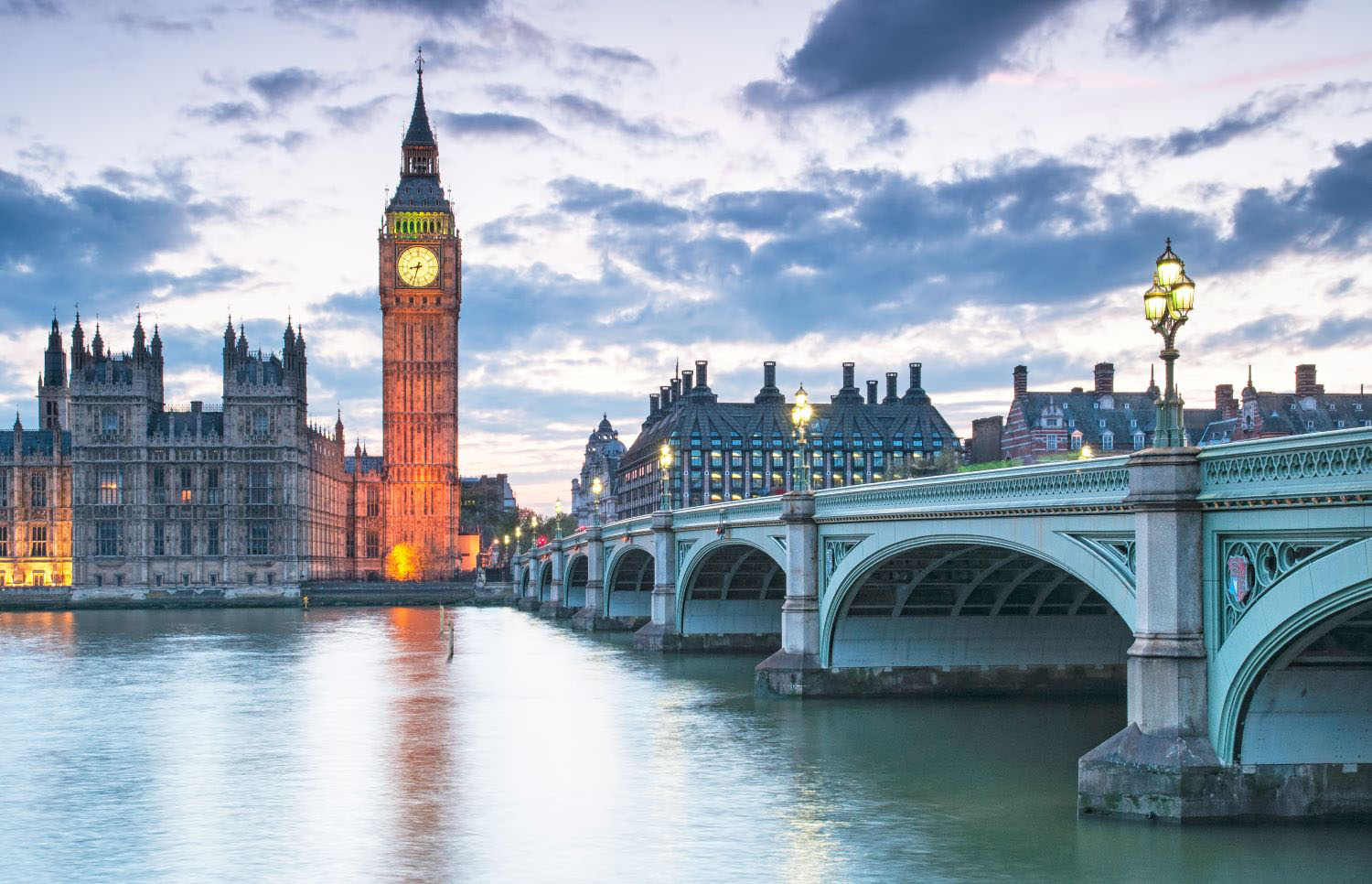Recommended
This note argues that the United Kingdom (UK), working within old and new coalitions, should take a more strategic approach to the aims and funding of a leading cluster of major multilateral funding institutions. It sets out the UK’s role within multilaterals, the key reform issues and how to treat multilaterals as a system, before highlighting four target areas for a more ambitious UK role.
What matters most for development is the global economic system—the system of finance, rules and norms that has enabled the spread of ideas and capital and underpinned huge improvements to standards of living worldwide. The UK was a founding architect of this system, fronted by the IMF, World Bank and World Trade Organization, as well as the United Nations. If the world is to move down a sustainable path to peace and prosperity, it is hard to imagine that happening without some version of the existing multilateral system supporting it to do so.
In a once again geo-competitive world, the multilateral development system remains an indispensable tool to fund getting big things done. We use “big” to mean things that are good for the whole world (e.g., climate change mitigation, pandemic preparedness, sustainable migration flows), but also aligned with important “Western,” as well as “Southern,” and even “Eastern” strategic interests (e.g. stability and prosperity in Africa).
Regardless of whether competition-cum-coherence with China is a key aim, a primarily bilateral approach to aid seems wholly inadequate. Given the growth and size of partner economies, the UK alone can no longer do much on either of these fronts, and its foreign policy must adapt accordingly. But it can leverage its still-significant multilateral stakes, and reputation as an honest broker, in major institutions like the World Bank Group (WBG), International Monetary Fund (IMF), the regional development banks, and the larger specialised “vertical” funds such as the Global Fund (AIDS, Tuberculosis and Malaria), Gavi and the Green Climate Fund[1]. This leading group is referred to here as the “top funds”, to distinguish them from the many other international agencies which mainly matter via their normative and advisory roles rather than sheer financial clout, in which the UK’s influence tends to be more diluted.
The rising powers, particularly China, are also increasingly assertive within the top funds, and are creating new ones in their own image, so working through this system will require the UK and its allies to deploy all their diplomatic skills, as well as judicious exercise of their still-high, but waning, voting power. A large group of intermediate-income “neutral” developing countries, neither firmly pro-Western, nor yet China- or Russia-aligned, will be key to striking this balance well. The Barbados-led Bridgetown Initiative, strongly supported by the UK, is an example of a rallying-point, which highlights the acute debt and climate vulnerability of many countries in this group and the urgency of more robust multilateral responses to both challenges.
How does the UK prioritise core multilateral funding?
About a third of all development aid from industrialised countries is provided as core (or “un-earmarked”) funding to multilateral organisations. These include multilateral development banks, including the WBG, with its annual disbursements of over $90 billion. They can offer donors like the UK the benefit of their larger scale, depth and (often) breadth of operations and related technical expertise, including a presence on the ground where the donor often has none itself.
The UK has long supported the top funds. For example, for many years it was the largest absolute provider to the World Bank’s fund for the lowest income countries, the International Development Association (IDA) (and is still the third-largest, behind the United States and Japan but ahead of Germany and France). Its leadership role has included being a thoughtful and proactive champion for reform at the World Bank and elsewhere: for example, advocating more effective integration of gender and development, and more recently of climate and development. The UK currently provides around 46 percent of its development finance to multilaterals, putting it third in the G7 on that metric (2021 data) ahead of Germany (31 percent) but behind France (52 percent) and Italy (77 percent). The chart below sets out more detail on the relative importance of the UK as a multilateral funder. As well as those highlighted in the table, the UK was also the largest donor to a further ten[2] multilaterals and the largest contributor to thirteen of the 50 largest multilaterals in this period.
Table 1. Main UK and total core multilateral contributions 2016-21 (2021 USD millions)
|
Multilateral Channel |
Total Core Contributions Received |
UK Core Contributions |
UK Share of Total |
UK Rank |
|---|---|---|---|---|
|
Multilateral development banks (Fund) |
||||
|
World Bank (IDA) |
36,424 |
7,262 |
20% |
1 |
|
African Development Bank (AfDF) |
7,980 |
1,086 |
14% |
2 |
|
Asian Infrastructure Investment Bank |
6,994 |
593 |
8% |
6 |
|
Asian Development Bank (AsDF) |
3,000 |
200 |
7% |
4 |
|
Verticals |
||||
|
Global Fund for Aids, Tb & Malaria (GFATM) |
14,707 |
1,797 |
12% |
3 |
|
Green Climate Fund |
5,909 |
729 |
12% |
4 |
|
Global Alliance for Vaccines and Immunization |
4,616 |
1,204 |
26% |
1 |
|
Global Environment Facility Trust Fund |
3,366 |
100 |
3% |
11 |
|
Other multilaterals |
||||
|
European Commission |
45,359 |
5,836 |
13% |
3 |
|
United Nations Department of Peace Operations |
3,171 |
240 |
8% |
4 |
|
United Nations Development Programme |
2,829 |
333 |
12% |
1 |
Source: CGD analysis, OECD CRS data. Covers multilaterals receiving a total averaging over $450m per year.
Note: UK rank refers to size of UK contribution relative to other countries
There is a wealth of empirical evidence on the roles and impact of these institutions, including CGD’s own Quality of ODA assessment, the UK’s role as an advocate on aid effectiveness and the use of evidence with its Multilateral Aid and Development Reviews, and the UK’s support for the Multilateral Organisation Performance Assessment Network (MOPAN). Despite this, budget allocations to them have diverged from these assessments. Top performers (UNICEF, the International Fund for Agricultural Development and the African Development Fund (AfDF)) have not seen significant increases in replenishments that might have been predicted, while others have repeatedly captured the lion’s share. Forthcoming CGD analysis suggests even the UK’s own assessment of multilateral value for money seems not to have a clear effect on its subsequent allocations. Part of the problem is that decisions on the big replenishments are taken in isolation from each other, with donor contributions often based on maintaining their historical positioning in supporting a particular fund (i.e. “burden sharing”).
The UK initially maintained its commitment to multilateralism, even as it reduced its aid budget, with cuts to its bilateral programme. However, last May’s (now superseded) development strategy called for 75 percent of FCDO’s budget to be spent bilaterally. The UK has reduced its commitment to high-profile multilaterals: the UK’s contribution to IDA’s 20th replenishment was under half the size of its contribution to the previous 19th replenishment (though asIDA20 was brought forward a year, this comparison arguably overstates the cut).
Still, Minister of State for Development Andrew Mitchell, who has been in post just over a year, commissioned the last Multilateral Development Review and is a recognised champion of effectiveness in multilateral action. Further, after four consecutive years of cuts to the UK’s international aid budget, the falling costs of refugee-hosting, and reduced contributions to the EU budget should mean the UK has substantial funding to allocate in the coming years, giving a government an opportunity to redefine its approach for the first time in at least five years.
Strategic issues in the multilateral system’s focus, aims, and funding
The recent White Paper has rightly included mobilising international finance and “strengthening and reforming the international system” as the first two of its seven priorities; and established ending extreme poverty in the context of climate as its primary aim. The paper also comes in the context of the 2023 Integrated Review Refresh, which highlighted the nature of strategic competition with China; and used that lens to motivate a bilateral focus on infrastructure and business.
Given the importance of the success of the multilateral system, there are pressing strategic issues to resolve. Foremost among these is to increase the finance provided by multilateral development banks by making better use of their balance sheets. This has the potential to significantly expand their impact, with the G20 Independent Expert Group suggesting the MDBs can triple lending by 2030, with some estimating reform could increase the total by over $500bn per year. The UK has long-argued for this reform agenda; and in spite of its recent shift towards bilateral approaches, has found ways to push forward reform, including through the targeted use of guarantees to strengthen MDB’s balance sheets and enable additional (particularly climate-related) lending and through the early adoption of climate-related debt clauses. Still, a combination of more technical work and leveraged financial contributions remains to be undertaken.
A parallel challenge in increasing finance volumes relates to the changing balance of the top funds’ goals and funding priorities. This comes down to how to focus concessional resources across two headline aims:
- Boosting stability, growth, prosperity, and key social outcomes in poorer countries, one at a time and
- Addressing global and regional challenges which threaten many or all countries and regions at once; i.e. delivering global public goods (GPGs).
These twin goals appear, on the surface not to be mutually exclusive. But in practice, there is a choice about whether to focus resources in largely middle-income countries to tackle climate and other global public goods, or to focus resources on lower income countries, particularly sub-Saharan Africa, with the greatest development needs and most at-risk from climate.
In the current debate around the future goals and funding of the World Bank, for example, this dilemma is arguably the most serious geopolitical fault line of the day. What would persuade middle-income countries to borrow for climate mitigation (or global pandemic preparedness, or international refugee hosting, etc) at a far greater scale? How would risks be shared? How might the Bank’s shareholders mobilise more concessional resources for such GPGs, without, for example, subtracting them directly or indirectly from the IDA window, which is ring-fenced for low-income countries?
Solutions of this kind have been achieved before, with a modest example of international solidarity in the current World Bank policy of transferring IBRD and IFC net income (derived from their loans and equity in emerging markets) into its IDA concessional window (for lower-income members).
The UK is still rightly recognised for its expertise on climate, and its focus on support for the poorest countries. Along with its still-strong shareholding in the top funds, it has, and is widely expected by other leading players to have, a strong continued role to play in their future. Creative thinking and coalition-building by the UK in this nexus could have very large positive ramifications; and could provide a template for its role in the coming years as a major shareholder with demonstrated leadership on support for the lowest income countries and for climate.
Treating the top funds as a “system”: Options and constraints
A further prerequisite for a more systemic approach by the UK and its like-minded partners is to break away from the current piecemeal approach to this group of top funds, dominated by multiple cycles of three-four year “replenishments” which are mainly incremental and refer back to previously negotiated outcomes.
With this approach, there is usually no comparison made to the mandate and impact of other top funds active in the same thematic arena or region, let alone a choice offered to switch funding substantially across them, or strengthen collaboration between them. Replenishment outcomes tend also to be sensitive to short-term perceptions of the quality of the institution’s top leadership at a point in time, rather than longer-term perspectives of sustained institutional capacity.
This piecemeal approach can lead to major anomalies.
For example, AfDF receives much less funding than IDA does for its work in Africa,[3] though both are assessed similarly by the 2011 MAR and QuODA, indeed the African fund is ranked slightly higher in some recent comparisons. (At one critical point, there were widespread G7 concerns about the top leadership of one of the two institutions, before serious doubts surfaced about the other).
Pandemic disease responses and prevention, egregiously for AIDS, TB and Malaria, but more recently also COVID-19, are funded across multiple vertical funds and the World Bank, among others. This is ironic, as the alleged historical failures of the Bank in this area originally led civil society advocates to push for the creation and expansion of GFATM, and this mandate overlap has never been resolved. There is no obvious read-across in each such replenishment to the comparative advantage of one or the other in delivering results.
And there is now a substantial, and some say ill-coordinated, array of medium-sized climate-related multilateral funds, with a thicket of different access rules for grants for broadly similar purposes, which interested low-income countries have to navigate (usually by hiring expensive consultants to prepare requests for funding).
These are all complex problem areas to which there are no easy off-the-shelf solutions. But it would certainly help if the UK and its like-minded coalition partners armed itself with a rolling multi-year strategy of the funding priorities and strengths across the main Core Funds, on a short list of crucial topics such as:
- Promoting African stability and growth
- Climate change mitigation and adaptation
- Pandemic disease prevention and treatment
In each case, the proposals of an invited handful of top funds with recognised technical and financial capabilities in the area could be heard by a small task force. This would then recommend priority funding and responsibilities across the group, which would feed into subsequent individual replenishments.
The UK could offer to act as one “curator” of this set of thematic analyses and assessments, preparing decisions for a strong subset of owners/members/supporters across the top funds, in effect a “meta” Board for the system.
A health warning: Solutions will be elusive and require perseverance
The above approach is not a magic bullet, just a progressive shift in method and perspective. Any ambition for restructuring the “architecture” of, say, international climate or health finance needs to be heavily tempered with realism.
There are a couple of long-standing bear traps to be aware of. First, the history of the top multilateral funds is peppered with high-profile new starts, often launched to bypass what stakeholders saw as serious deficiencies in older institutions. However, the latter are then usually left free to grow their funding into the same geographic and thematic spaces, warts and all. The cumulative result is more fragmentation and overlap, not less.
Second, given the complexity of some of these operational models, upper-middle-income countries can be forgiven for suspecting that funding that could potentially benefit them is being stealthily “steered” elsewhere by some still-dominant advanced country shareholders, for their own geo-political reasons.
Any UK Government therefore needs to recognise both that the multilateral system deserves support and significant attention but also that reform will rely on determination, genuine partnership with shareholders and recipients, and a good deal of perseverance.
Conclusions
The UK can and should place a new and much greater emphasis on top major multilateral development institutions to shape the global system to ensure it supports a prosperous and stable world.
To do so, we make four recommendations for a new UK approach:
First, the UK should recognise the centrality of the multilateral system to nearly all of the UK’s objectives, from poverty reduction to health security, to refugees, and climate resilience. The four consecutive years of cuts to the UK’s bilateral programmes—each undertaken abruptly within financial years—highlight another weakness of an overly bilateral approach. Coming years will offer an opportunity to prioritise key multilateral funding alongside a clear plan for its evolution.
Second, the UK—and FCDO in particular - should increase its resources and focus on multilaterals and develop a clear strategy for influencing within and through the multilateral system. Ministers and officials need the bandwidth to think beyond the next replenishment or annual shareholder meeting; while ambassadors and officials representing the UK at the top funds need greater support, expertise and reputational importance given to their roles.
Third, the UK, and its partners, must see and treat multilaterals as a system, and particularly the top funds. This will mean working with shareholders and partners to look beyond individual replenishments to think about how the top multilaterals should be shaped as a whole. The funds themselves are moving towards this—with for example, joint reporting on climate effort—but shareholders and other countries need to be clear about how the system as a whole tackles crucial topics, and what that means for multilaterals’ resources and focus.
Finally, the UK can help shareholders see their need to work as a collective and to their comparative advantage in funding and leading reform. As above, this will need to involve giving voice to recipients, and working with emerging economies as well as like-minded partners. In this process, the UK could see itself as a “curator” alongside others, rather than a leader, recognising the need for partnership and perseverance in achieving real change to the global architecture.
The authors would like to thanks Sam Hughes for research support.
[1] Seven multilaterals (World Bank, African Development Bank, IMF, GFATM, GAVI, GCF, and GEF) account for a majority of core multilateral contributions by industrialised countries. We are not defining a new grouping, merely illustrating a possible initial “top funds” cluster to attract policymakers’ focus. For further statistical analysis, see OECD, especially Figure 2.3.
[2] Specifically: International Development Association Multilateral Debt Relief Initiative; the Central Emergency Response Fund; the IMF Poverty Reduction and Growth Trust; the International Finance Facility for Immunisation; UN Entity for Gender Equality and the Empowerment of Women; WHO Core Voluntary Contributions; Council of Europe; CGIAR Fund; Global Environment Facility - Special Climate Change Fund; and the Private Infrastructure Development Group
[3] This can be seen through a comparison of the three-year IDA19 (July 2020 - June 2023) and ADF-15 (2020-2022) replenishments. IDA19 committed $53.1bn just to Africa (Eastern, Southern, Western and Central), whereas the total resource level of ADF-15 was $7.5bn (i.e. UA 5,620.28 million, converted at the UA:USD ratio of 1:1.330840 (as of 31 December 2022)).
Rights & Permissions
You may use and disseminate CGD’s publications under these conditions.
Image credit for social media/web: Adobe Stock







